Key takeaways
- Rawls’ concept of the “veil of ignorance” encourages impartiality when designing a just society, pushing individuals to consider fairness without personal biases.
- His two principles emphasize equal basic rights and allow social and economic inequalities only if they benefit the least advantaged, fostering a shift from self-interest to collective responsibility.
- In education, applying Rawls’ theories can transform classroom dynamics, encouraging inclusivity and support for students facing challenges, rather than treating all equally.
- Critiques highlight challenges in fully achieving Rawls’ ideals, particularly regarding the measurement of benefits for the disadvantaged and the need to consider diverse cultural contexts in discussions of justice.
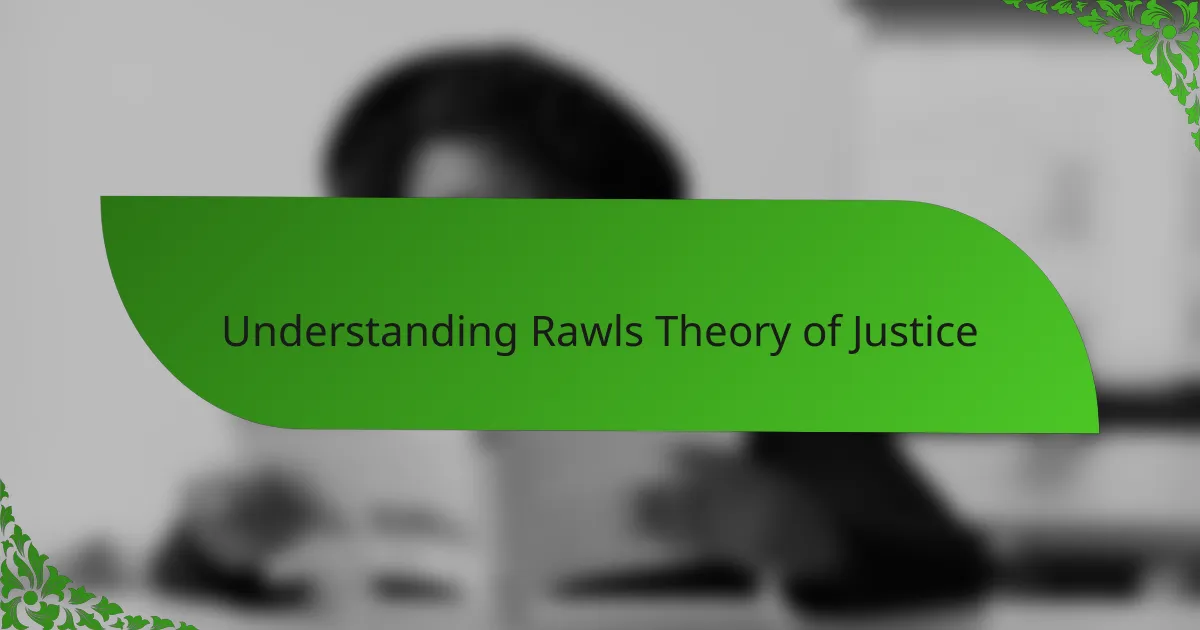
Understanding Rawls Theory of Justice
Understanding Rawls’ Theory of Justice starts with his idea of fairness as the cornerstone of a just society. It’s fascinating how Rawls imagines people making decisions behind a “veil of ignorance,” unaware of their own social status. This thought experiment challenges us to think: If you didn’t know where you’d end up in society, what rules would you agree upon to ensure fairness for all?
I remember grappling with this concept and realizing how powerful it is—it strips away selfish concerns and pushes us toward impartiality. Rawls emphasizes two principles: equal basic rights and social and economic inequalities arranged to benefit the least advantaged. It’s a bold claim that justice means protecting those who have the least, but doesn’t that make justice more compassionate and realistic?
What I find most thought-provoking is Rawls’ focus on the “difference principle,” which permits inequalities only if they help the worst off. It makes me wonder, in daily life, how often do we consider the impact of our actions on the most vulnerable? Rawls’ theory invites us to rethink justice not just as rules but as a commitment to fairness rooted deeply in empathy.
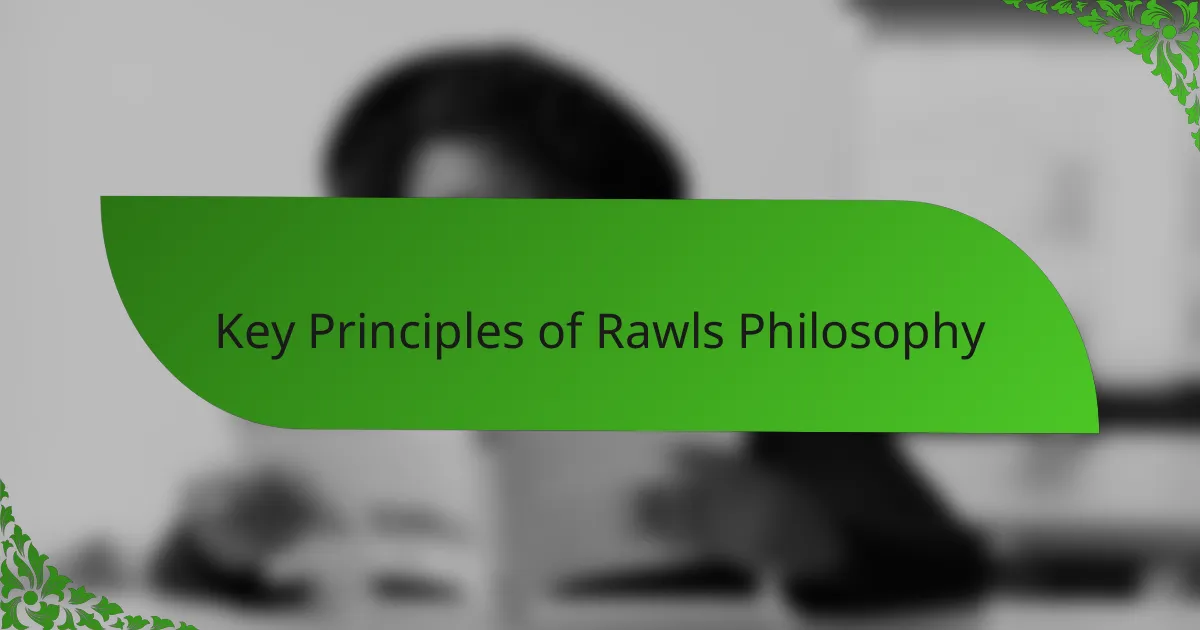
Key Principles of Rawls Philosophy
Rawls’ two main principles really struck a chord with me. First, everyone should have equal basic rights—things like freedom of speech and personal safety—which felt absolutely essential. Then, there’s the second principle, which says social and economic inequalities are only okay if they benefit those who are worst off. That made me pause: can fairness really mean allowing some inequality, as long as it serves the greater good?
I’ve found the “veil of ignorance” especially compelling. Imagining myself without knowing where I’d land in society made me reflect on how easy it is to take privilege for granted. It’s almost like Rawls is asking us to step outside ourselves and care deeply about others, no matter their background. Have you ever tried thinking that way? It’s challenging but eye-opening.
What I appreciate most is how Rawls doesn’t just offer a theoretical ideal but a practical guide. His insistence on protecting the least advantaged feels like a call to action, not just philosophy. It’s made me more aware of how justice should not be abstract but connected to real people’s struggles—and that’s a perspective I think more of us could use.
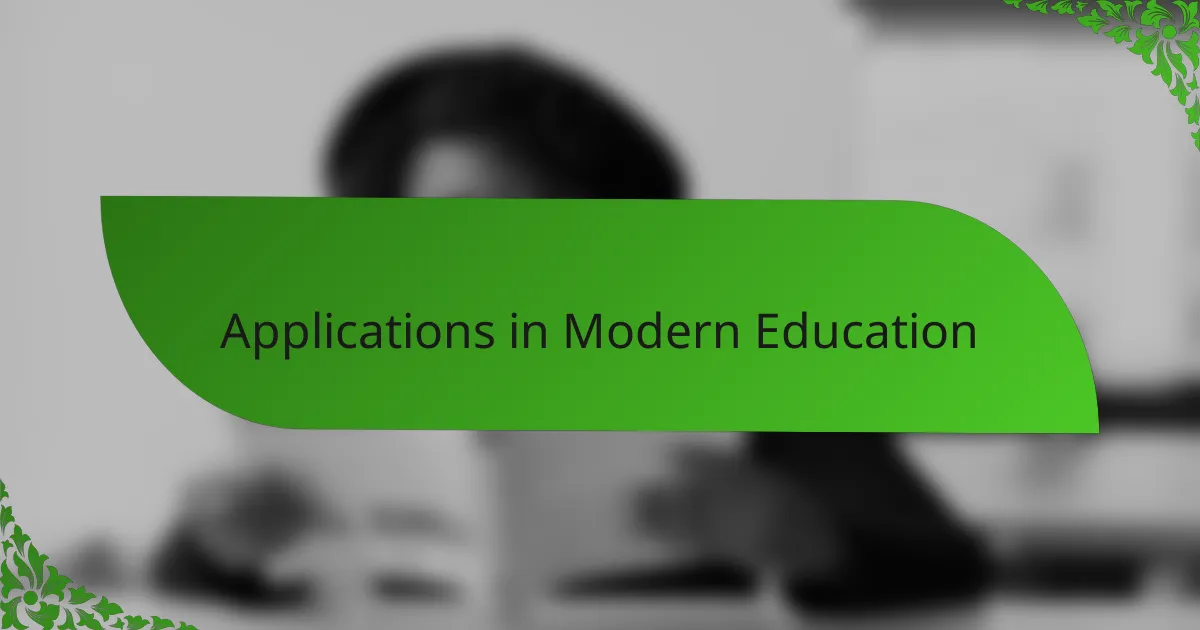
Applications in Modern Education
In modern education, Rawls’ emphasis on fairness pushes me to rethink how classrooms are structured. Shouldn’t learning environments ensure that every student, especially those facing challenges, gets the support they need to succeed? I’ve seen firsthand how applying the difference principle can transform a classroom, making it more inclusive and just for all learners.
What really strikes me is how Rawls’ idea encourages educators to design policies that don’t just treat everyone equally but aim to uplift those at a disadvantage. It makes me ask: Are our current grading systems really fair, or do they unintentionally widen gaps? Incorporating Rawlsian justice invites schools to balance equality with genuine empathy, creating a more supportive space.
I recall a school project where I helped develop resources specifically for struggling students, inspired by Rawls’ thought experiment. It wasn’t just about fairness in theory, but about taking real steps to redistribute opportunities. This hands-on experience showed me how powerful his philosophy can be when put into practice in education today.
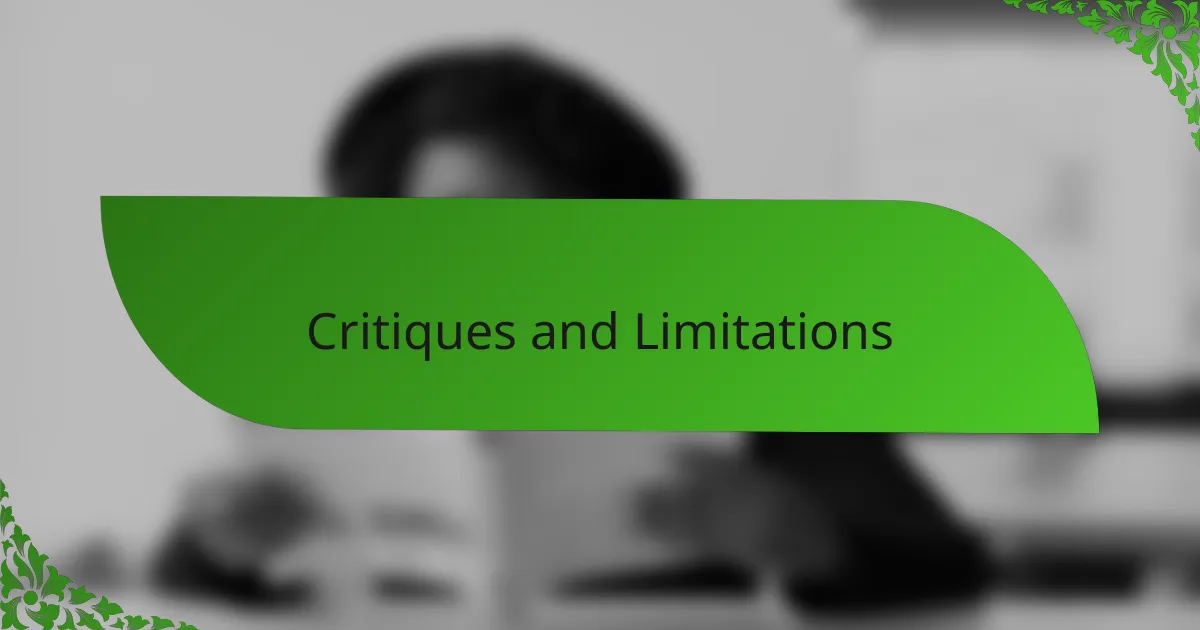
Critiques and Limitations
Rawls’ theory, while inspiring, doesn’t escape criticism, and I’ve often wrestled with some of its practical limits. For instance, the “veil of ignorance” assumes we can completely set aside our personal biases and social identities when deciding on justice, but is that truly possible? From my experience, stepping entirely outside oneself feels more like an ideal than something achievable in real life.
Another point that gave me pause is the theory’s emphasis on equality benefiting the least advantaged, which sounds noble but can feel vague when applied. How do we measure “benefit” precisely? I’ve encountered debates where people argue endlessly about whether certain policies actually help the worst off or just maintain the status quo under a different name. That ambiguity made me question how actionable Rawls’ principles are without clear guidance.
Finally, I sometimes wonder if Rawls’ focus on fairness overlooks deeper cultural and historical contexts that shape justice differently for various communities. In my readings and conversations, it’s clear that justice isn’t a one-size-fits-all concept. Can a single theory truly capture the nuances of diverse social realities? This limitation shows me why Rawls’ work is a starting point, not a final answer.
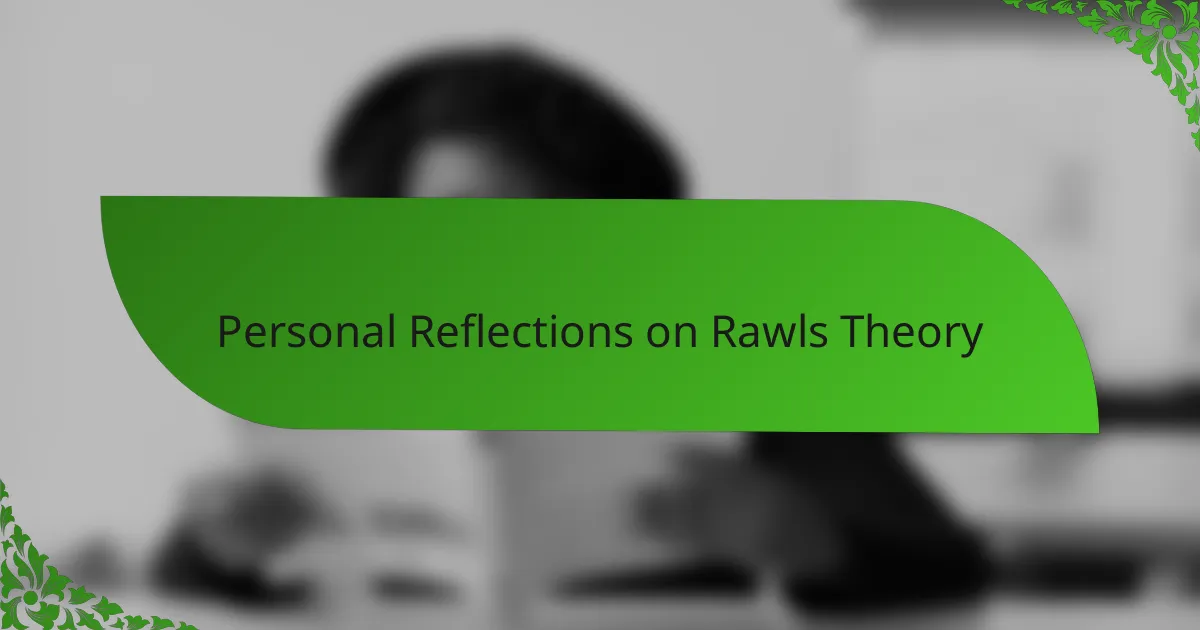
Personal Reflections on Rawls Theory
Rawls’ idea of justice often makes me reflect on my own assumptions about fairness. I wonder, have I truly considered what justice means from the perspective of someone less fortunate? This thought pushes me to be more empathetic and aware of how social structures shape opportunities.
Sometimes, I catch myself questioning whether I can fully embrace Rawls’ veil of ignorance. Putting aside my own experiences and biases isn’t easy—I’ve realized it’s more a guiding ideal than a practical state I can maintain constantly. Yet, striving for that impartiality feels like a valuable exercise in humility and fairness.
What resonates deeply with me is how Rawls challenges us to prioritize the well-being of the least advantaged. It’s a tough call because it asks us to rethink how we view success and equality in everyday life. Doesn’t that provoke a powerful shift from self-interest toward collective responsibility? In my experience, that shift can be both uncomfortable and necessary.
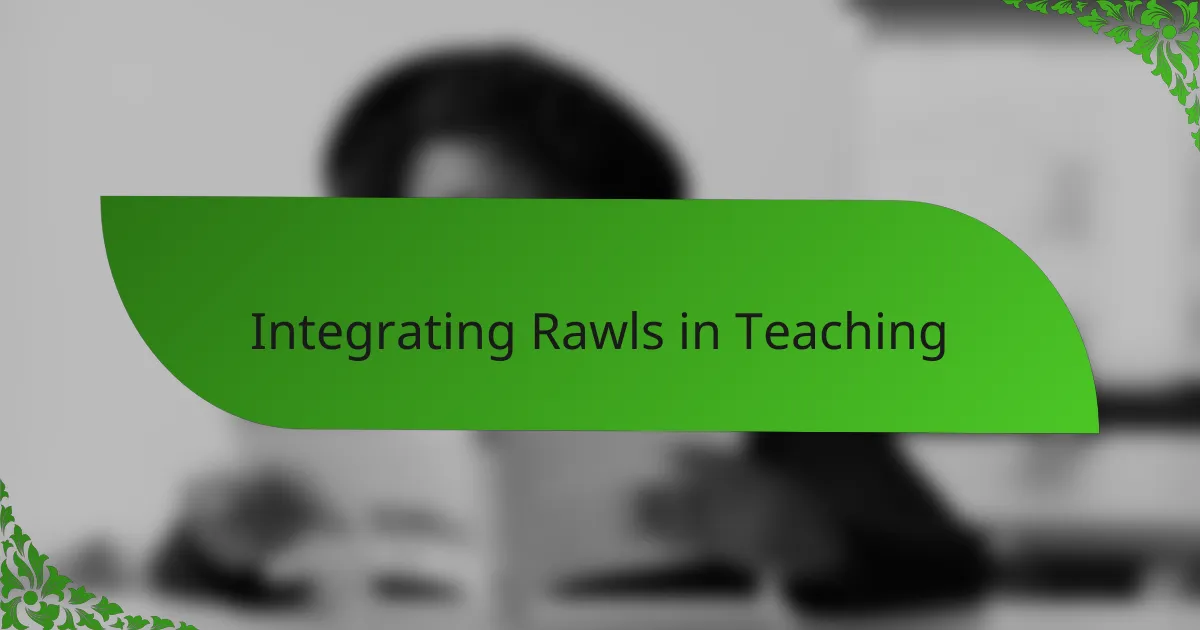
Integrating Rawls in Teaching
Integrating Rawls into teaching has reshaped how I approach classroom discussions about justice. I often encourage students to step behind the veil of ignorance, challenging them to imagine designing rules without knowing their own place in society. This exercise sparks surprising empathy and often shifts their perspective on fairness in a powerful way.
I’ve noticed that bringing Rawls’ difference principle into lesson plans pushes us beyond abstract ideals. Instead of just talking about equality, we explore real strategies to support those who struggle the most. Have you seen how framing debates around “benefiting the least advantaged” can make conversations more grounded and urgent? It really brings his philosophy alive for learners.
One project stands out in my mind—when I invited students to create policies that would help marginalized groups in their school. Watching them wrestle with balancing fairness and practical benefit reminded me: teaching Rawls isn’t just about theory, it’s about cultivating a mindset that values justice as active, ongoing work. Integrating his ideas feels less like a lesson and more like an invitation to care deeply about community.
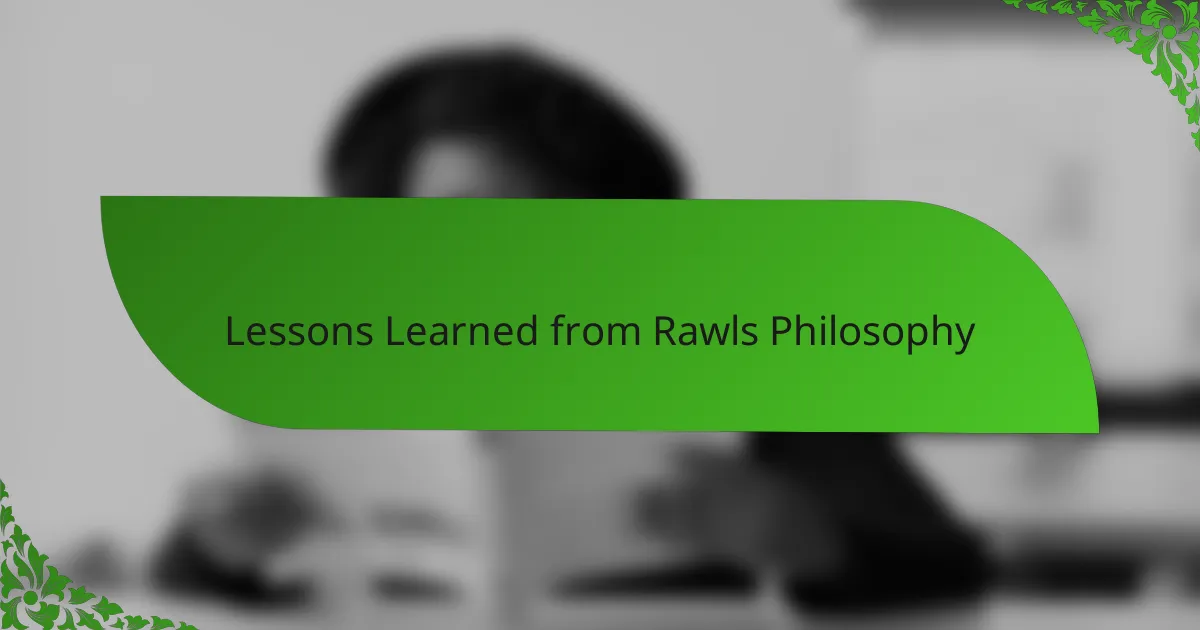
Lessons Learned from Rawls Philosophy
Rawls’ philosophy taught me that justice isn’t just about treating everyone the same, but about actively making sure those with the fewest advantages are supported. It made me rethink fairness—not as a fixed rule, but as a dynamic effort to uplift the most vulnerable. Have you ever considered how much we overlook the needs of the least well-off in everyday decisions?
What struck me deeply is how the “veil of ignorance” pushes us to imagine ourselves in someone else’s shoes before setting rules. I recall a discussion where this idea sparked genuine empathy among my peers, leading us to question our own privileges more honestly than before. It’s powerful because it transforms abstract justice into a personal responsibility.
Of course, Rawls’ lessons aren’t always easy to live by. Balancing equality with practical benefits for the disadvantaged requires constant reflection and courage. Yet, embracing this challenge feels essential—because without it, justice risks becoming a distant ideal rather than a guiding principle in our communities.